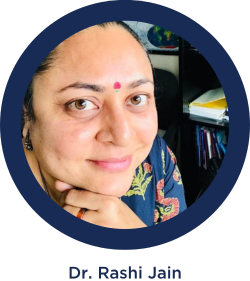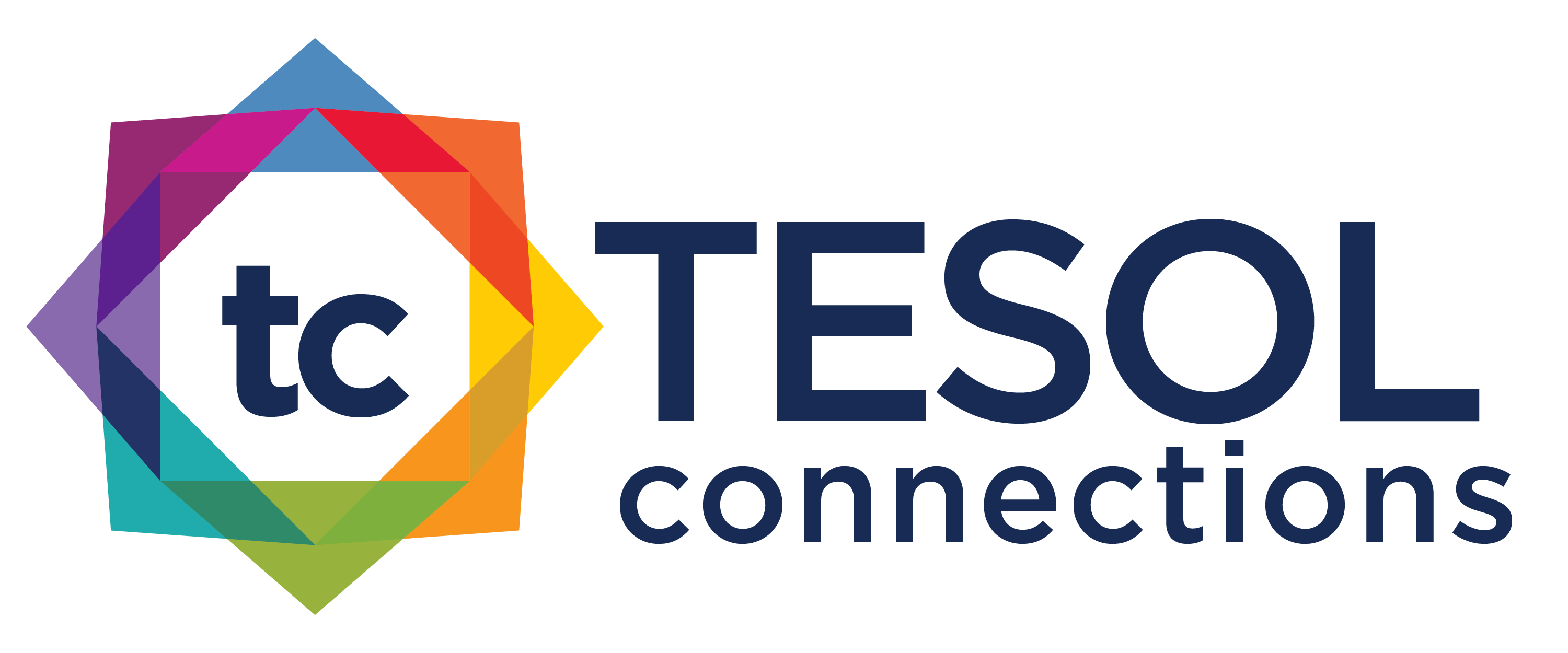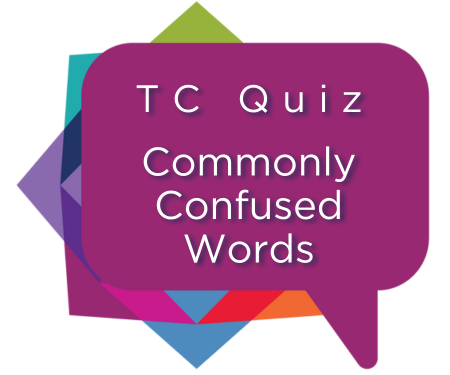KEEPING ENGLISH LANGUAGE PROFESSIONALS CONNECTED
Context Connections
Beyond Borders: Embracing Translingual, Transnational, and Transracial Pedagogies
In the evolving landscape of global education, educators stand at the forefront of a crucial shift towards more inclusive and responsive teaching methodologies. Dr. Rashi Jain, a distinguished educator whose journey spans continents and languages, embodies the spirit of inclusivity and innovation that is reshaping the way we approach language education.
With rich personal and professional experiences drawn from across the first 25 years in multilingual India and the subsequent two decades in United States, Dr. Jain lives out a pedagogical philosophy that bridges the gap between academic scholarship and practical teaching experience—a philosophy she refers to as being a "pracademic." She currently teaches courses in English for academic purposes in an urban community college setting, where she works with diverse multilingual students.
I had the opportunity to chat with Dr. Jain at this year’s TESOL convention in Tampa, Florida. Seated together on a windy balcony overlooking the beautiful Tampa riverwalk, Dr. Jain and I discussed her professional journey and her pedagogical philosophies.
Transnational Experiences and Multilingual Orientations

As she thinks about her students, Dr. Jain draws on her own transnational experiences, from her upbringing in India to her relocation to the United States for further education. She says, “I grew up in a multilingual family in multicultural Delhi, engaging in translingual practices through my childhood and into my adulthood across social, academic, and professional spaces there. I acquired new languages both as a child and as an adult in India.”
Dr. Jain says she prefers the term transnational to terms like immigrant, because it encompasses more. Although both terms describe the students’ experiences of being in their current country, transnational also includes and values their experiences in their home countries or other places where they have connections.
Additionally, Dr. Jain has noticed that more and more of her transnational students do not just have connections to only two countries (“home” and “host” countries), but even three or more. For example, a student may be identified as from Nepal, but perhaps their family lived in Bhutan for generations before returning to Nepal as refugees and then immigrating to the United States. Similarly, in an upcoming journal article, Dr. Jain focuses on one of her students whose parents were born in one African nation, and then the student was born in another country on the African continent after his parents migrated there. Now, the student is putting forth new roots in the United States.
Students like these draw from their rich experiences and connections across multiple countries when participating in language learning. Dr. Jain believes that thinking of these students as transnational, translingual, and transracial—especially in their (English) language practices—is one step toward creating more inclusive spaces for students.
Translingualism in the Classroom
The shift from India to the United States at 25 marked a pivotal moment for Dr. Jain, not only geographically but also in her understanding and approach to language education. Her transnational journey underscored the contrast between the multilingual context of India and the predominantly monolingually oriented academic settings she encountered in the United States.
Yet, it was this contrast that fueled her resolve to integrate her translingual and multicultural orientations into her educational practices, challenging monolingual norms and advocating for a more inclusive approach to language learning.
Dr. Jain uses her own multilingualism as an example for her students on maintaining and valuing the home language as a resource for learning. Describing the first days of school when teachers are learning how to say their students’ names, she explains:
As my students say their names, I write them down phonetically in Hindi to master the correct pronunciation, as Hindi has more vowels and consonants than English, and once I see the name written down in Hindi, the correct pronunciation is imprinted in my memory. Afterwards, I show my students the list of their names written down in Hindi and explain to them why I do that. I then encourage my students to find similar creative ways to draw upon their own translingualism to master target vocabulary and pronunciation patterns, without losing or devaluing existing ones, in the host context.
Dr. Jain's classrooms are laboratories of innovation, where global competencies are not just taught but experienced. Through modules on global competence, global Englishes, transnational migration, and global food systems, she invites her students into a world where learning transcends traditional academic boundaries. Her teaching is marked by creative and critical engagement strategies ranging from examining the nutritional information in packaged food labels to examining true and false cognates across languages, thereby making the abstract both tangible and relevant to their lived experiences.
The Pracademic Approach: Bridging Theory and Practice
Dr. Jain identifies as a pracademic, emphasizing the blend of practitioner and academic. She simultaneously and seamlessly embodies both of these roles through her research and teaching practices. In taking on this identity, Dr. Jain challenges traditional academic norms and promotes a more integrated approach to education. She also takes a radically open stance to criticism and feedback, encouraging her students to give her critical feedback; she even made sure that during our interview I felt comfortable pushing back and disagreeing with her ideas. This progressive and innovative stance encourages all of us in the field of education to rethink the traditional hierarchy of roles between researcher, educator, and student.
When asked about her reason for doing this work, Dr. Jain says without hesitation, “My students inspire me. Their stories deserve to be told.” Through presentations, publications, and professional engagements, Dr. Jain shares her insights and innovations with the wider educational community, advocating for a shift towards more inclusive and dynamic teaching practices. Her work challenges educators to rethink their approaches to language teaching and to view diversity and multilingualism as assets rather than obstacles.
By her example, Dr. Jain inspires a new generation of teachers and educators to embrace the pracademic spirit, bringing their own experiences and research into the classroom to create a learning environment where every student can thrive in our global community.
Further Resources
“Where is Home?”
In this TedTalk, Pico Iyer describes his journey as a person who is Indian by ancestry but has lived in different countries throughout his life. He connects to an increasingly common experience for transnationals and in doing so also redefines the meaning of home.
Translinguistic Identity-as-Pedagogy: Implications for Language Teacher Education
This article, coauthored by Suhanthie Motha, Rashi Jain, and Tsegga Tecle, explores how teachers' pedagogical practices, shaped by their translinguistic histories and social identities, should be deeply integrated into their teaching, highlighting the importance of this approach for teacher educators.
Global Englishes, Translinguistic Identities, and Translingual Practices in a Community College ESL Classroom
This article, authored by Rashi Jain, highlights the importance of recognizing and integrating the diverse Englishes and translinguistic identities of English as a second language students in the classroom.
Also In This Issue
‣ Sparking Student Success with Professional Learning Communities
‣ TESOL Annual Report: 2023 in Retrospective
‣ PD Corner: From Novice to Master: Transformative Teacher Training That Works
‣ AI Tools for the Four Skills in English Language Learning
‣ TESOL 2024 International Convention Highlights
‣ TC Quiz: Commonly Confused Words in English
Recent TESOL Blogs
‣ Teaching About Eid al-Fitr and Eid al-Adha: Activity Ideas for Your Classroom
‣ Earth Day 2024: Classroom Activities for Multilingual Learners of English
‣ Beyond the Buzz: 5 Ways to Cultivate Convention Connections
‣ Taylor Swift, Global Literacies, and ELT: Are You Ready for It?



About the author
Hetal Ascher
Hetal Ascher has served multilingual learners in various roles including as an independent consultant, a WIDA professional learning specialist, an English language teacher, and a program coordinator. She volunteers at TESOL on the Professional Learning Council and as the incoming chair for the Reading and Vocabulary Interest Section. She has an MA in ESL education and a BA in ESL education K–12.